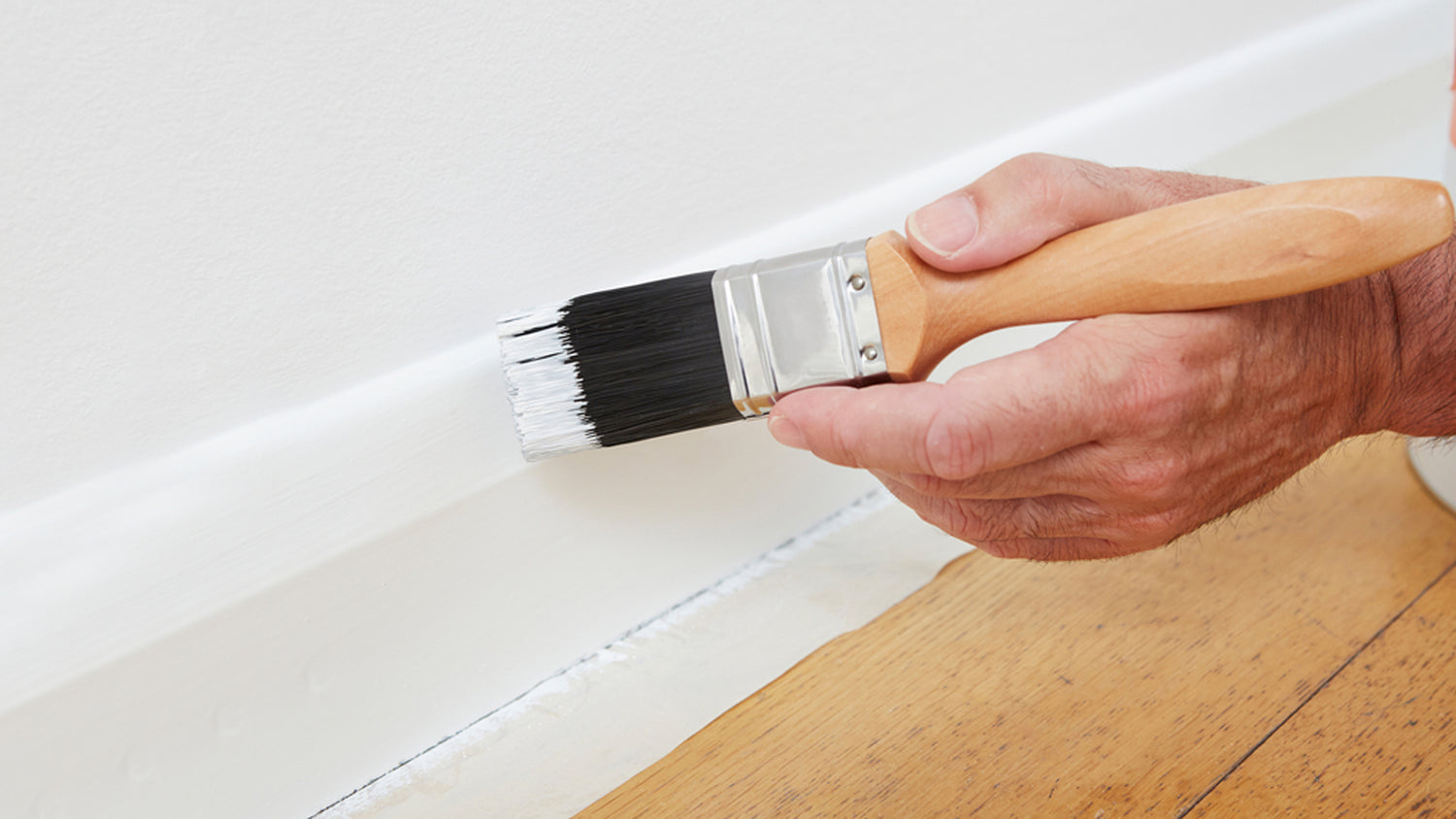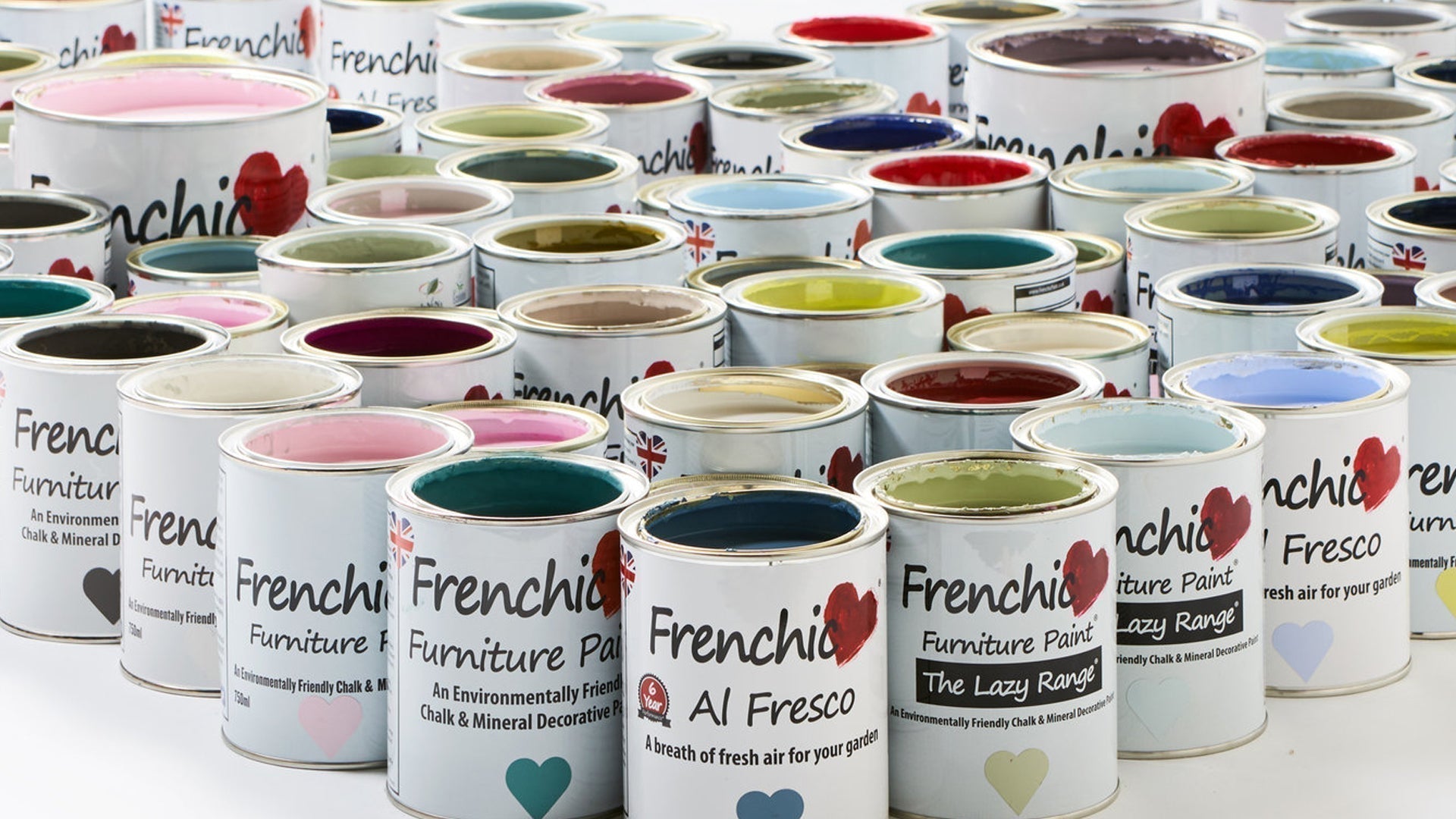Any professional will tell you that it's essential to have a well-considered plan of action when renovating a room. Thankfully, painting in the correct order makes the whole process easier by eliminating messy mistakes, and giving you the best chance of a perfect result. Then, choosing the right paint promises durability and an expert finish.
In this blog post, we’ll answer all your questions about painting skirting boards, including:
- What is the correct order to paint a room?
- What is the best colour and paint for skirting boards?
- How do you prepare skirting boards for painting?
- What's the best way to paint skirting boards?
What is the correct order to paint a room?
As a rule, you should start at the top and work your way down when painting a room, meaning walls come before skirting boards. This clever top-down approach stops drip marks and overspray from ruining newly painted surfaces below.
We suggest painting in the following order: ceilings, walls, skirting boards and frames, and then doors.
1. Ceilings
You should always start with ceilings because rollers often splatter excess paint onto surrounding walls (and unsuspecting DIYers). First, liberally lay down dust sheets before cutting in the edges using a suitable sized brush – around 50mm, flat or oval. Then, roll paint in square sections across the ceiling for even coverage.
2. Walls
Once the ceiling is dry, walls can be cut and rolled with your chosen colour (you only need one or two coats when using high-quality Frenchic Chalk Wall Paint). You don't need to stress about small amounts of paint getting on surrounding woodwork link door frames or skirting boards. But any large blobs are best wiped away.
3. Skirting boards and frames
Make sure walls are dry before using low-tack masking tape to cover the immediate area above and around the skirting and frames. This will help you achieve a sharp border when painting. It's crucial to choose the right paint for the best result (more on this next).
4. Doors
Lastly, complete the look by painting doors. Brushes are the best tool for panelled doors but you might prefer a small roller for flat doors
How do you prepare skirting boards for painting?
First and foremost, you should prepare the whole room at one time, from the ceiling down, before painting anywhere. The good news is, when using beginner-friendly Frenchic skirting board paint for your skirting boards, surface prep is simple and no primer is required:
- Use our sugar soap solution and sponge to clean your skirting boards.
- Sand the woodwork, whether painted or not. Sand to smooth any rough areas, remove any previous drip marks or imperfections. If there are none then sand to provide a key for the paint. This will ultimately give a more durable finish.
- Fill holes and dents with a high-quality filler – remove the excess by sanding once it's dry.
- When you're ready to paint, tape dust sheets as close to the skirting board as possible or if there is space, slot folded cardboard into the crack underneath to avoid mess.
What's the best way to paint skirting boards?
You should only paint skirting boards when all preparation (above) has been completed. Once your masking tape is in place, start with the top edge of the skirting board. Paint along the line of the boards, horizontally from the top edge to the base, working in small sections for a seamless finish.
Use the right tools
A decorator is only as good as their tools, which is why you need expertly crafted brushes to hand.
Oval brushes are ideal, especially if you are not a regular painter, as they are specially designed for chalk paint pick-up. However, a good quality, soft flat brush is also a good choice.
Apply less paint
People make their lives more complicated by overloading paintbrushes. Remember, skirting boards are a small area, so you don't need bucket loads of colour for full coverage.
When applying paint to your brush, dip the first third of the bristles and tap off any excess. This prevents drips from gathering along the bottom of the skirting as you paint.
Wipe away drips
Of course, using less paint means fewer drips. However, you should frequently check as you go to avoid unsightly bumps. If you notice paint congealing, simply use a brush or cloth to smooth the area.
Are you ready to paint your skirting boards?
Are you ready to paint your skirting boards with minimal fuss and expense? If so, browse our high-quality skirting board paint and follow the straightforward advice in this handy blog post.
We've designed our Trim Paint with skirting boards in mind, making it the perfect way to finish off your rooms, hallways, and landings. Best of all, it's highly robust and easy to apply – no priming and simple prep.
Every product has a subtle satin finish and is available in a range of great shades. There’s even chalk wall paint to match for a cohesive look.
If you'd like some more decorating inspiration, subscribe to the Frenchic TV YouTube channel, where you’ll find plenty of expert advice to make painting easy.








